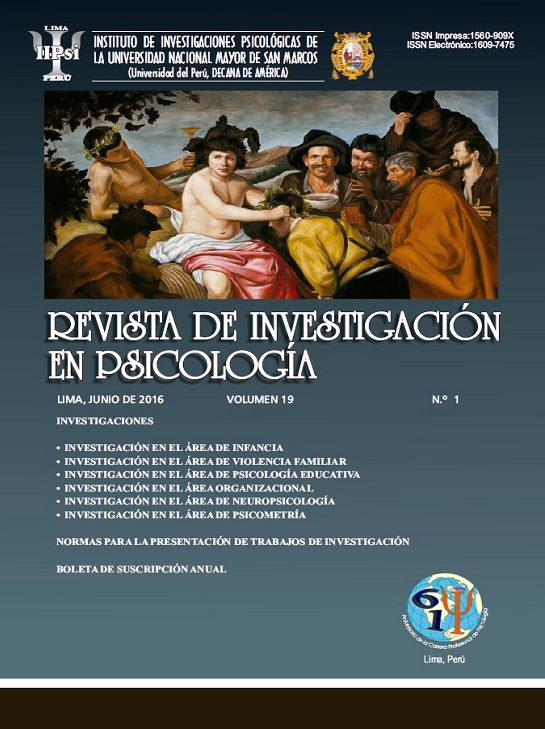Receptive vocabulary of the mother and the oldest brother of rural areas children based on the baseline study of the National Program Cuna Más, 2014
DOI:
https://doi.org/10.15381/rinvp.v19i1.12443Keywords:
receptive vocabulary, early childhood development, tvip, childhood,Abstract
Objectives. To know receptive vocabulary levels in mothers and oldest brothers of children in rural areas and explore their relationships with socioeconomic status and maternal education. Methods. Quantitative study done between March and August 2013. We collected data from 5723 mothers and 3487 oldest brothers. We used the Peabody Picture Vocabulary Test (TVIP), and a sociodemographic questionnaire. Results. Mothers reach an average score of 72.7 points in TVIP and socioeconomic gradients of maternal vocabulary showed a horizontal trend in major and minor groups wealth. Brothers obtained an average score of 32.4, respectively, establishing gradients defined by levels of wealth and maternal education. In the case of the brothers, both the socioeconomic gradients and the differences in the educational level of the mother were related to an intensification with age while in the case of the mothers, we could see a horizontal trend over the age. Conclusions. The evaluation has established an analytical framework for the future evaluation and monitoring of the National Program Cuna Más.Downloads
Published
Issue
Section
License
Copyright (c) 2016 Fernando Llanos Z., Miguel Campos S., David Tarazona C., José E. Velásquez H., Miguel Ugarelli Z.

This work is licensed under a Creative Commons Attribution-NonCommercial-ShareAlike 4.0 International License.
THE AUTHORS RETAIN THEIR RIGHTS:
a. The authors retain their trademark and patent rights, and also on any process or procedure described in the article.
b. The authors retain the right to share, copy, distribute, execute and publicly communicate the article published in the Journal of Research in Psychology (for example, place it in an institutional repository or publish it in a book), with acknowledgment of its initial publication in the Journal of Research in Psychology.
c. Authors retain the right to make a subsequent publication of their work, to use the article or any part of it (for example: a compilation of their work, lecture notes, thesis, or for a book), provided that they indicate the source. of publication (authors of the work, magazine, volume, number and date).






